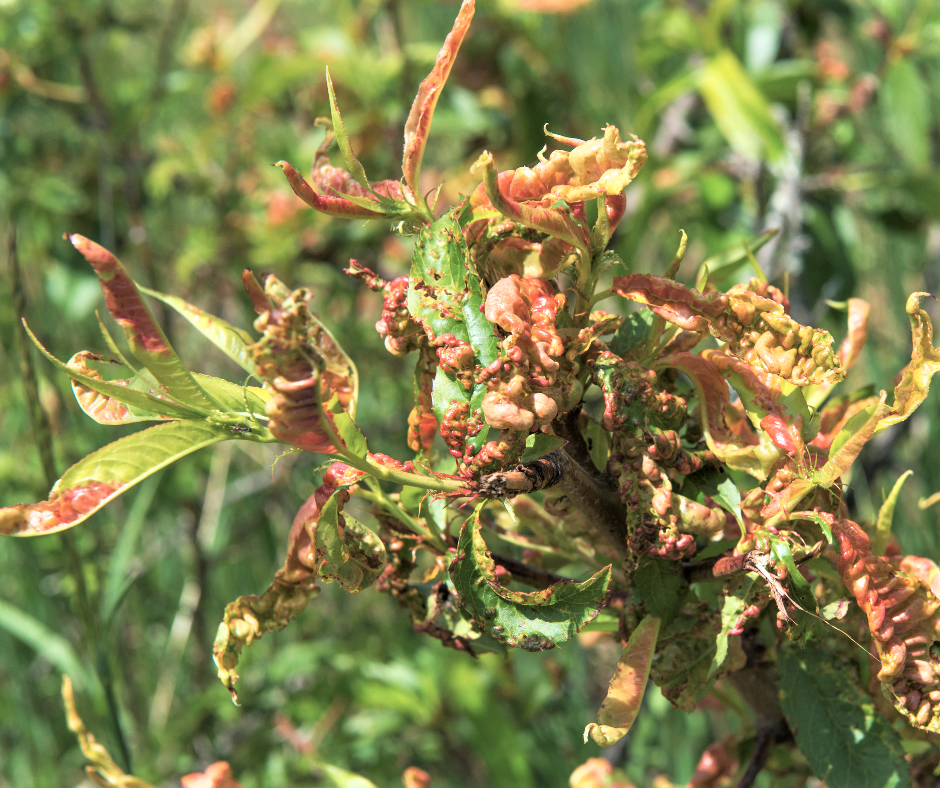Gardner 2 Gardner: Now is the time for early pest intervention with dormant applications

It happens every year, just after the peach trees leaf out in the spring, I get a number of calls from home growers that their peach leaves look like they have been infected by aliens.
The leaves turn a bizarre pink and even more unsettling, their texture is buckled and pinched and turns leather-like — the answer, peach leaf curl — a disease caused by the fungus, Taphrina. The unfortunate thing is the treatment has to be done the February before the spring. Such is the case for dormant applications of some fungicides and oils. Now is the sweet spot for using these great controls, but you have to learn some important tips.
It should seem obvious from the name, but it isn’t, that dormant applications should only be used during the dormant season. Used in the growing season, you run the risk of a permanent dormancy (death) of your plants. Dormant treatments are strong — whether horticultural oils that help to smother overwintering insects; or as in the case of the peach leaf curl, using a strong lime-sulfur solution to burn off the fungal spores. Using these treatments are highly effective and often, in the case of insects, reduces the need for additional repeat treatments during the growing season.
The tricky part is the timing. Mother Nature has sure had her hot flashes this winter, with much of winter hovering in the 40-degree range, so dormancy may break early — or not. Early February is usually our target time for treatment.
But as I repeat every time, we talk applications of anything, read the label, the label is the law. All plant application labels have very specific details to treatment. Usually, our biggest flaw is how much, but when it comes to dormant application, the key is when.
For peach leaf curl, the University of Illinois Extension recommends lime-sulfur, chlorothalonil, or a copper solution (called Bordeaux mixture) should be applied to trees in late fall after leaves have dropped, or early spring before the buds begin to swell. Usually, for us in Northern Illinois, the winter application is easier to predict than fall.
When using these products it is essential to really saturate every crack and crevice of the bark, and even spray around the base of the peach trees on the ground. These funguses are tricky, they hide in the most protected places. That is why it is important to provide good coverage. Also, dormant treatments are a one-and-done not repeat treatments, so it is key to pay close attention to how you apply.
The fungicidal treatment for peach leaf curl is for peaches, ornamental peaches and nectarines. A very specific target group of plants. The use of horticultural oil as an insecticide is much more far-reaching for our plants. And it has two rates. It is key to follow this information.
Dormant oil and summer weight oil (also known as all season horticultural oil) are the same product, but applied at different rates. The popularity of use of horticultural oils is on the rise since these products are not nerve toxins like most pesticides, but rather, a physical control.
Insects breathe through holes on the sides of their bodies, these openings are called spiracles. The oil coats these openings and, in effect, strangles the insects.
As gruesome as it sounds, it is highly effective and has a bonus over traditional pesticides. Since it is a physical control, not chemical, insects cannot develop a tolerance to oils. With pesticides, insects eventually (sometimes over a short period of time) as they reproduce, produce individuals that are resistant to a specific pesticide. As those resistant individuals find each other and reproduce, now we have resistant generations.
The dormant oils are used in the winter. Be sure you are reading the rate of dilution for the winter application, as the more summer weight dilution will not be effective in winter temperatures. Again, as with the dormant application of the fungicides, coverage is key.
Avoid just an over-the-top spray, and be sure to concentrate on the “armpits” of the branches. Under branches, particularly at the juncture where they meet the trunk are notorious hideouts for overwintering insects.
It also is beneficial to spray the area underneath the trees with dormant applications, because overwintering insects are often harboring there, too.
There is one more benefit to these dormant applications; it gives gardeners an opportunity something to do outside in mid-winter.
While you are out there, start to inspect for any other winter issues like branches broken from winter winds, or a piece of caulking on the house that has come loose, creating a welcome opening for mice.